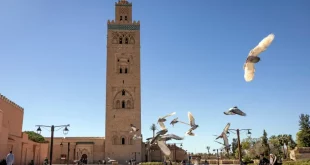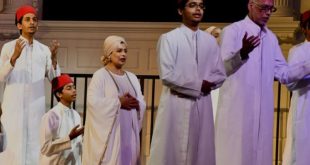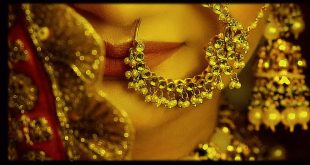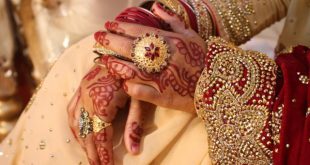The relations that have existed between the Sinhalese and Muslims of Sri Lanka since time immemorial may be cited as a unique example of ethnic harmony in pluralistic, multi-ethnic societies. This inimitable relationship between the country’s majority community comprising of over 70 percent of the population and a minority of less than 10 percent is certainly an eye-opener for all those who think that majority-minority relations has necessarily to be ridden by conflict. Of course we have to understand that this is a longstanding relationship formed over a thousand years. As such it has stood the test of time and has been able to withstand the numerous attempts made by various colonial powers and chauvinistic racist elements to destroy it. Most of us are aware of the special symbiotic relationship that has existed between the two communities in connection with the economic life of the country. The Sinhalese kings and people, we know, greatly appreciated the contribution made by Muslim traders whose itinerant trading activities took them to the remotest parts of the country. These enterprising traders who painstakingly penetrated into the deepest interiors of the country are known to have taken with them for trade and barter commodities suited to the simplest needs of the villagers including clothes, jewellery and foodstuffs such as dried fish, an important protein supplement, which were not easily procurable in those days given the travails of travel. Less known however are the other aspects of this close relationship which included intermarriage and adoption of a number of cultural traits of the host culture. Intermarriage Sinhalese-Muslim amity is an established historical reality and has been so for at least the past thousand years or so when Arab merchants and settlers began peacefully trickling into the country for purposes of trade and settlement. Many of these Arabs, being good Muslims, do not seem to have harboured any racial prejudices and freely intermarried with the daughters of the land, thus giving rise to the present-day Sri Lankan Muslim community (meaning that community known as the Moors who form over 95 percent of the Muslim population in the island). Such intermarriage seems to have lasted several centuries and has even continued to the present day. Many factors would have contributed to this attitude. For one thing, the Arabs who resorted to the island would have found it difficult to control their natural urges, particularly when away so long from home where they would have had wives. A second marriage being permissible in Islam would have been looked upon as an ideal way out of this predicament. Further, those Arabs who had chosen to settle down here permanently would have had little recourse but to espouse local women. Secondly, since the Arabs have traditionally reckoned descent from the paternal line, even the more ethno-centric among them would not have been too concerned about co-habiting with non-Arab women since their offspring would still be recognised as Arabs by the larger community. What must also be borne in mind is that the Arabs, beginning from the early days of Islam were not averse to marrying non-Arab women. The Prophet Muhammad himself is known to have taken a Coptic woman from Egypt known as Māriya through whom he had a son named Ibrāhīm. We also come across instances of Arab men espousing Greek or Byzantine women in mediaeval Arabian literature such as the Kitāb Al-Aghani and the Alf Layla Wa Layla. Indeed, even royalty was no exception and this was especially true of the Abbasids, a house that traced its ancestry to Abbas, an uncle of the Prophet. Several Abbasid princes, we know, were born of Greek, Persian or Turkish women. There is ample evidence to show that a good many Sri Lankan Muslims have a considerable infusion of Sinhalese blood. The Muslims of Akurana trace their descent to three Arabian mercenaries who espoused Kandyan Sinhalese women during the reign of King Rajasinha II (1635-1687) (A Gazzetteer of the Central Province of Ceylon.A.C.Lawrie.1896) while The Gopala (Betge Nilame) clan, a well known Muslim clan domiciled in Getaberiya in the Kegalle district likewise claim descent from Arab physicians (hakims) who arrived in the country from Sind during the reign of King Parakramabahu II (1236-1270) of Dambadeniya and espoused Kandyan women (The Muslims of Sri Lanka. One thousand years of ethnic harmony. Lorna Dewaraja.1994). James Emerson Tennent mentions in his monumental work Ceylon (1859) that in the mountains of Ooda-kinda in Western Oovah is a small community known as the Padu-guruwas who profess Islam, but conform to Kandyan customs, while H.W.Codrington (Glossary of Native, Foreign, and Anglicised Words. 1924). gives Guruva as “a man of a mixed race of Sinhalese and Moor descent and of the Muhammadan religion in Uva”. The Guruwo are also said to have been found in Dibburuwela in the Udasiya Pattu of Matale South (See Lawrie.1896). Less known is the fact that this intermarriage between Muslim and Sinhalese was also in evidence in the south and is known to have continued until fairly recent times, for E.B.Denham Ceylon at the Census of 1911.1912) observes “ Amongst the Moors in Colombo and Galle at the present day there must be a fairly considerable infusion of Sinhalese blood; the number of Sinhalese women married to or living with Moors is fairly large”. In fact, the Muslims of the Sinhalese areas have tended to bear a certain resemblance to the Sinhalese amongst whom they live, which may perhaps indicate some admixture of Sinhalese blood since at least the Kandyan period. James Cordiner, a keen observer of peoples who spent five years in the country (1799-1804) could hardly distinguish a Muslim from a Sinhalese in his Description of Ceylon (1807), where he refers to the country’s Muslims as “the Cingalese who profess the religion of Mahomet”. Another authority, John Davy (An Account of the Interior of Ceylon.1821) says of the Muslims “In dress, appearance and manners, they differ but little from the Singalese”. Such intermarriage has benefited the community in two ways. For one thing it has paved the way for a greater understanding between the two peoples, for there is no tie stronger than the bond of blood, except for faith. Also important is the fact that this miscegenation or racial intermixture has given vigour to the community. Sri Lanka’s Muslims are often described as an intelligent and enterprising people and this we can be fairly certain is to a great extent attributable to their mixed ancestry. As convincingly shown by Curt Stern in his Principles of Human Genetics (1960), hybridization between different races enhances the vigour of the resultant offspring, a process known as heterosis or hybrid vigour. That this process has been in play among local Muslims is evident from their robust physique and intelligent countenances. Please Click here to read the complete Article
Tags By Asiff Hussein
Check Also
THE HENNA FEAST – A PRE-NUPTIAL MUSLIM CUSTOM
Putting on Henna or Egyptian Privet (Lawsonia Inermis) to form intricate designs on the bride’s …
 Sri lanka Muslims Web Portal Diversity and Inclusiveness
Sri lanka Muslims Web Portal Diversity and Inclusiveness




Thank you br Asiff, for the reminder of our ancestry. Not long ago in the 1920s and 1930s, the money that were collected in the Kalutara Bodhi was given to Kalutara Mahakade, for safe keeping. The Kalutara Mahakade was owned by Zainul Abdeen Marikar and Mohamed Ismail Marikar of Beruwela. This shows the trust the Sinhalease Buddhists had on the Muslim traders. Incidently Zainul Abdeen marikar is the father of ZAM Refai the owner of ZAM GEMS.